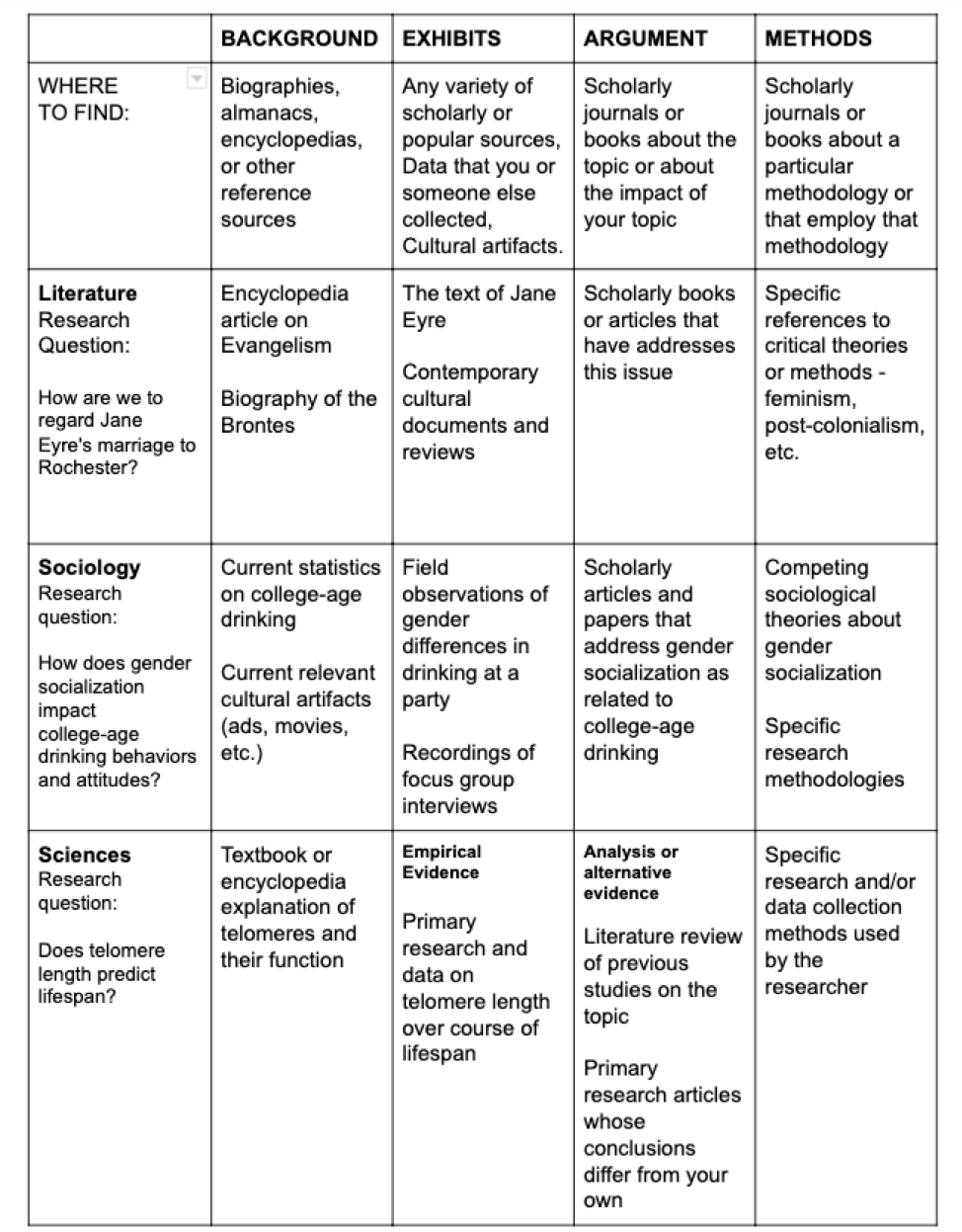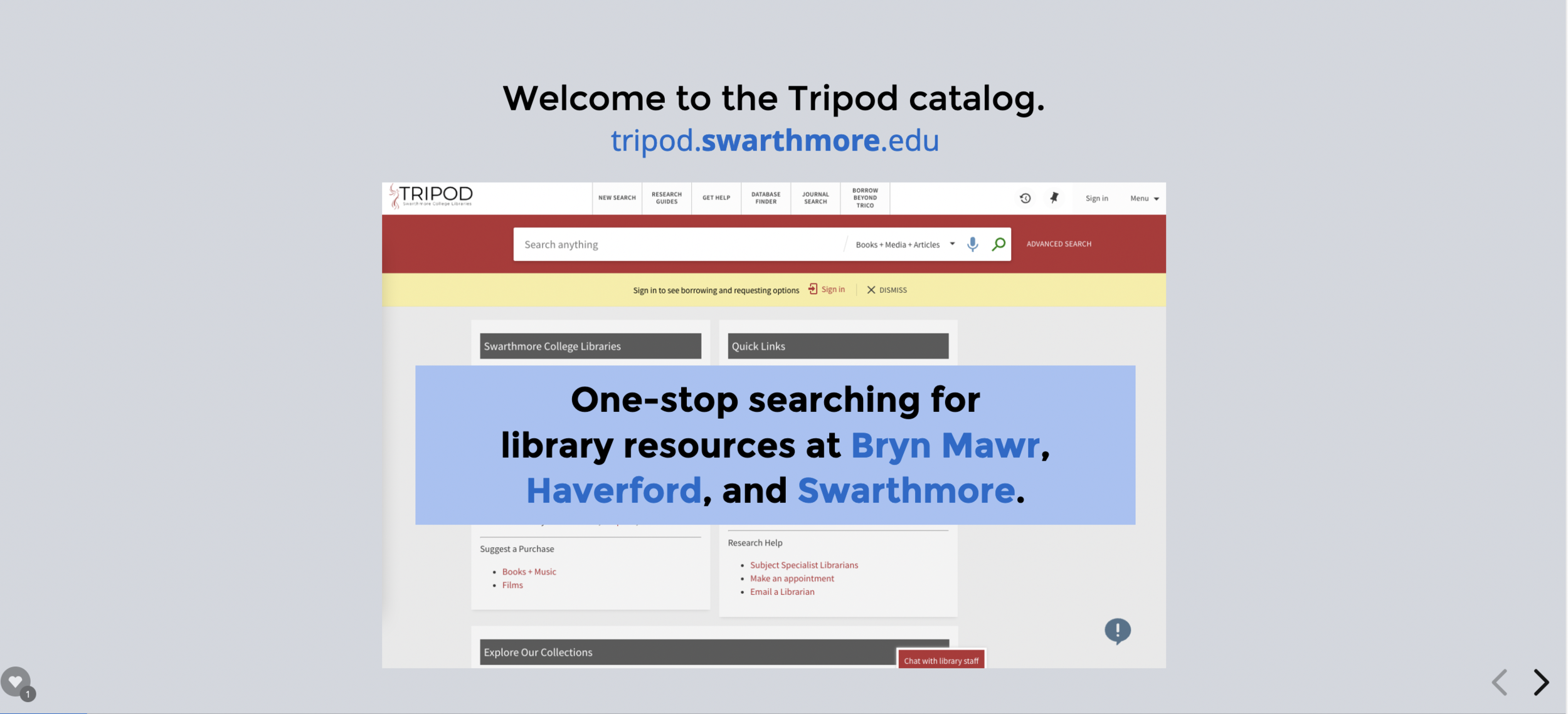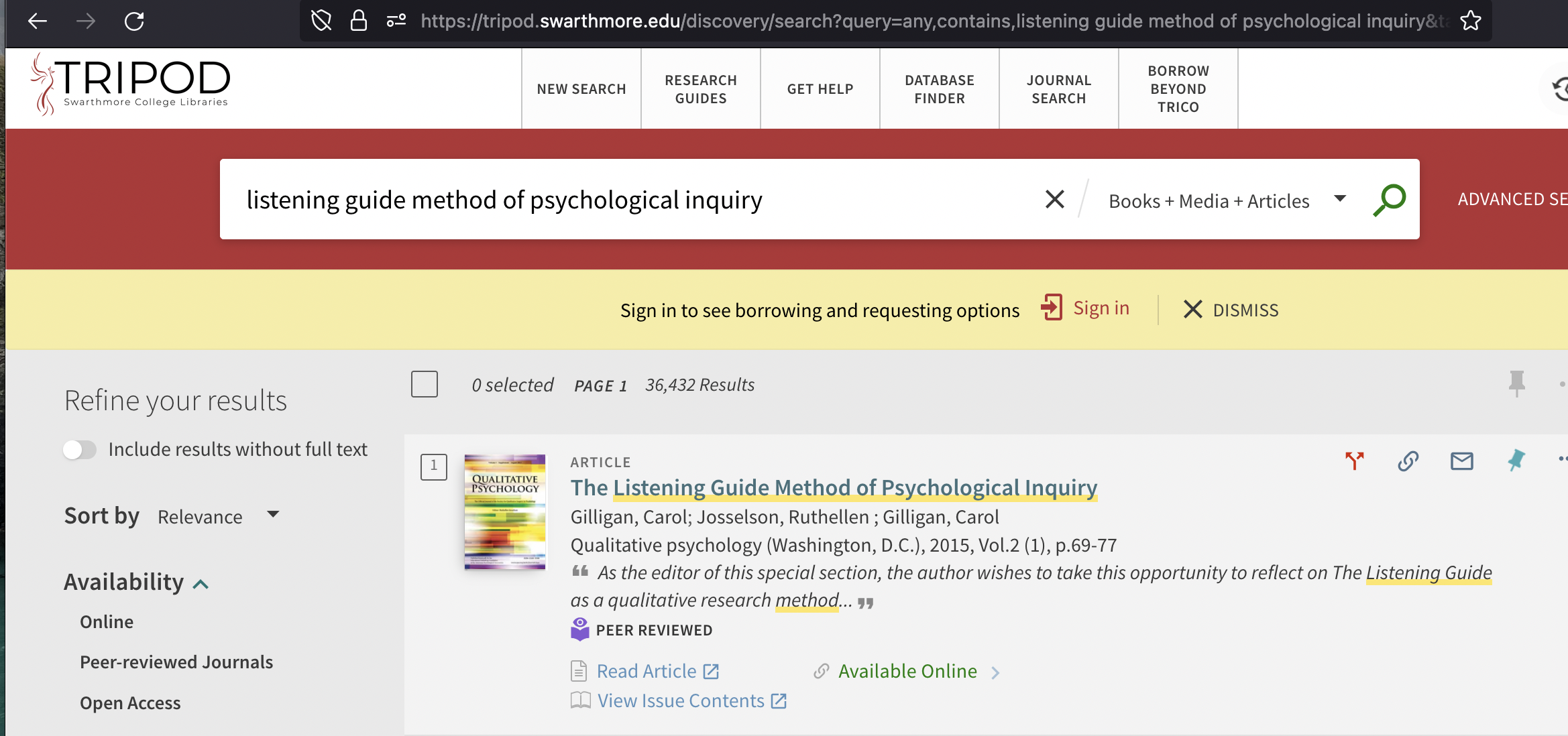Research + the Libraries
Key skills and resources for Summer Scholars
S3P 08.03.2022
+ Introduction to the libraries
+ What is research?
+ How do we find it?
What are we doing here?

Resources
Advice
Services
Spaces
{Subscriptions, Books, Journal Articles, Databases}
{Research help from librarians + RIAs}
{Requesting articles, Borrowing books from other libraries}
The Libraries
{McCabe, Cornell, Underhill}
(+ a lot more!)
What is Research?
process
(something you do)
stuff
(something you find)
"I’m studying drosophila to determine whether odor changes mating behavior."
"I'm looking for articles on
olfactory response in the mating behavior of drosophila."
Kinds of resources
- Print books
- Print journals
- eBooks
- Online journals
- Articles
- Book chapters
- Data and Statistics
- Maps
- Magazines and Newspapers
- DVDs and streaming video
Where do we find research (articles, books, etc.)?
Some useful tools:
-
Research Guides
-
Databases (Web of Science, JSTOR)
-
Google Scholar (scholar.google.com)
Homework Review:
Tripod Tutorial
Research skills we'll go
over in this session:
-
Following leads in other scholars' works
-
Recognizing different types of sources
-
Finding research articles about a topic of interest
-
Evaluating whether a source may be useful for you
Following leads in other scholars' works
Open Niobe Way and Joseph Nelson's book chapter. Chapter title: "The Listening Project: Fostering Curiosity and Connection in Middle Schools."
Go to page 288.
Locate the sentence that includes note #30.
Go to the notes section (end of the chapter). Find note 30.
Following leads: recognizing different types of sources
Journal Article
Author, A. A. (Year). Title of Article. Title of Journal, Volume # (Issue #), Page #s, doi:xx.xxxx/xxxxxx
Carol Gilligan, "The Listening Guide Method of Psychological Inquiry," Qualitative Psychology 2, no. 1 (2015): 69-77
Alisha Ali, "A Framework for Emancipatory Inquiry in Psychology: Lessons from Feminist Methodology," Race, Gender, and Class 13, nos 1-2 (2006):1-14.
Author, A. A. (Year). Title of Article. Title of Journal, Volume # (Issue #), Page #s, doi:xx.xxxx/xxxxxx
Following leads: recognizing different types of sources
Carol Gilligan, Joining the Resistance (Cambridge: Polity Press, 2011).
Book Chapter
Author, A. (Year). "Title of chapter," in Title of book, ed. Editor(s). Location: Publisher, pages.
Book
Author, A. (Year). Title of work. Location: Publisher.
Other common source types: Conference Presentations, Videos
Niobe Way and Leoandra Rogers, “Resistance to Dehumanization during Childhood and Adolescence: A Developmental and Contextual Process,” in New Perspectives on Human Development, ed. Nancy Budwig, Elliot Turiel, and Philip David Zelazo (Cambridge: Cambridge University Press, 2017), 209–228.

Journal Article
Book

To read an article, search Tripod (unless you'd rather pay for it!)
Finding research articles about
a topic of interest
- Go to the database Web of Science
(see shortcut on Tripod homepage)
- Search for the following:
middle schools AND listening skills
Evaluating if a source
will be useful to you:
the B/E/A/M model
B / E / A / M
Writers rely on background sources, interpret or analyze exhibits, engage arguments, and follow methods.
Bizup (2008)
Exhibit (Evidence)
Background
Materials used to establish facts. Implies membership in a community based on shared references
The materials to be analyzed, examined or interpreted
Argument
Sources you engage with or respond to directly by countering, extending or refining the claims made
Method (Model)
Using a source's way of analyzing an issue to apply to your own issue
B/E/A/M examples

Practice using BEAM
The interviewer asks "thick" questions---rooted in Geertz's distinction between "thick" and "thin" interpretations (21) -- that get at the nuances and details of an experience.... [Page 278]
21. Clifford Geertz, The Interpretation of Cultures
Method
In this sentence, Way and Nelson cite Geertz's book to show how they are using his approach to interpretation to guide their own.
1
Practice using BEAM
A longitudinal study in New York City reveals that 55 percent of teachers who entered middle schools between 2002 and 2009 left those schools within 3 years. (3)
3. William H. Marinell, "The Middle School Teacher Turnover Project...
Background
In this sentence, Way and Nelson use Marinell's research as a background source - introducing the situation and problem their research will focus on.
2
Practice using BEAM
Rather than starting from the belief, evident in many middle schools, that education is about filling empty vessels (i.e. heads and/or brains) with information... (12), our project starts from a more expansive set of beliefs.... [Page 275]
12. Paolo Freire, Pedagogy of the Oppressed
Argument
Way and Nelson cite Paolo Freire's Pedagogy of the Oppressed in order to build on his analysis of educational systems.
3
Citation Guide
Thank you!
Andrea Baruzzi (abaruzz1)
Science Librarian
Simon Elichko (selichk1)
Social Sciences and Data Librarian
questions?
S3P Scholars 2022
By Swarthmore Reference
S3P Scholars 2022
- 269





